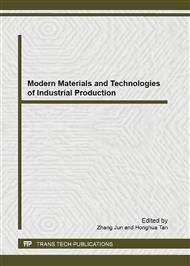p.19
p.23
p.28
p.32
p.39
p.46
p.54
p.61
p.64
Electrochemical Corrosion Behavior for Friction Stir Welded Al-1.1Mg-0.98Si Alloy with Annealing Time
Abstract:
Recently, demand for environment protection and reduction of energy consumption has led to active development of technology to reduce the weight of transportation devices. Furthermore, due to the development of the ocean leisure industry, there is a increasing number of small shipbuilding including yacht using aluminum. However, there are a lot of problems to be solved in aluminum ship welding from the technological, economic and environmental perspectives. An alternative to solve these problems is the friction stir welding technique. But, inflow frictional heat is generated in case of friction stir welding of 6061-T6 alloy, and the crystalline structure grows, resulting in weak mechanical strength. Accordingly, this study is to improve the mechanical characteristics and corrosion resistance of FSWed 6061-T6 alloy through annealing heat treatment. This study compared the characteristics with time of heat treatment at a constant temperature for the annealing heat treatment. Results of electrochemical experiments, the stir zone in annealing time 60min. showed the low corrosion current density. Micro-Vickers hardness in 60min. presents the higher value than the other conditions.
Info:
Periodical:
Pages:
39-45
Citation:
Online since:
September 2013
Authors:
Price:
Сopyright:
© 2013 Trans Tech Publications Ltd. All Rights Reserved
Share:
Citation:


